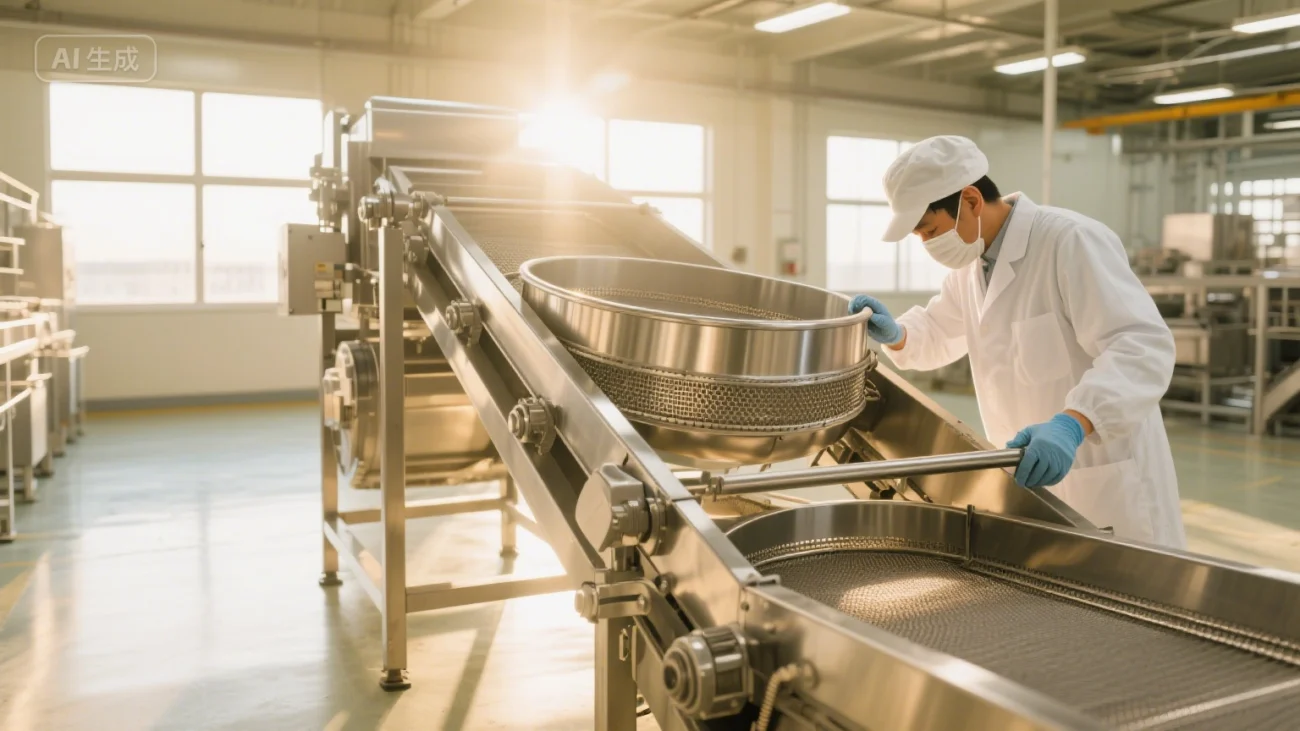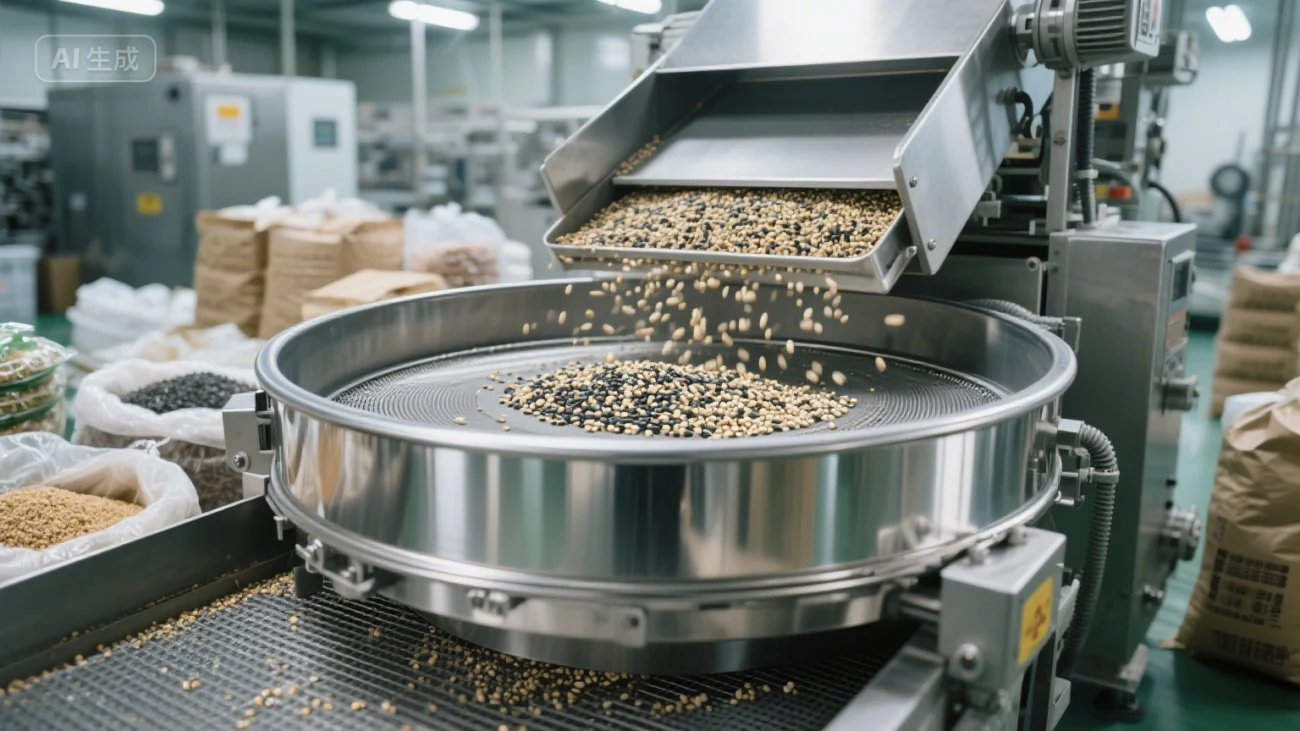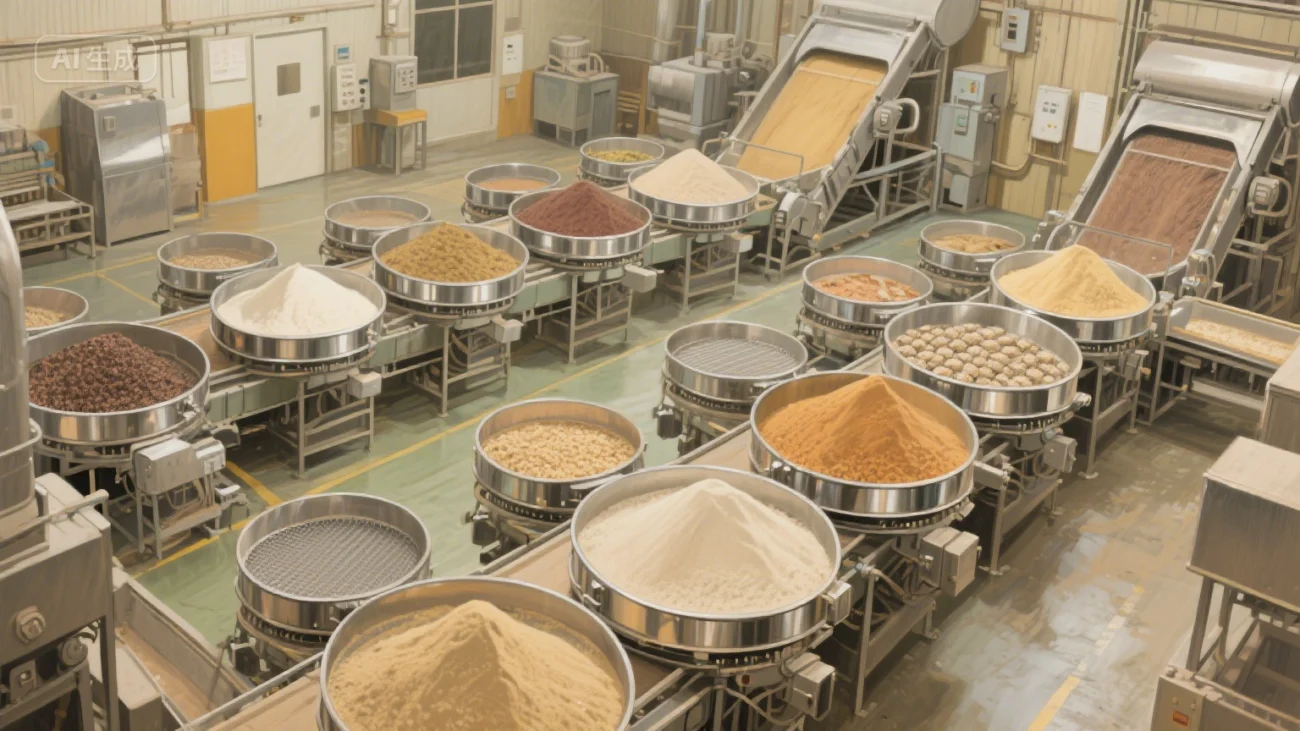A Legacy of Precision: The Culture of Quality in Japanese Food Manufacturing
Japanese food processing has long stood as a global benchmark for precision, cleanliness, and attention to detail. Rooted in centuries-old culinary traditions, modern Japanese food production incorporates cutting-edge technology while upholding strict hygiene and quality protocols. In such an environment, the adoption of stainless steel vibrating screens is not merely a matter of efficiency but a strategic imperative tied to national expectations of food integrity.

Stainless steel vibrating screens are uniquely suited to meet the rigorous demands of Japanese food production environments. These systems support highly controlled processing lines where contamination, even at microscopic levels, is unacceptable. Unlike conventional carbon steel or plastic sieve structures, stainless steel offers enhanced corrosion resistance, ensuring long-term durability in environments exposed to high humidity, varying pH levels, and constant mechanical stress. Japanese standards, aligned with international benchmarks such as HACCP and ISO 22000, mandate that all direct food contact machinery—such as the food sieving machine—must be manufactured from materials that neither leach nor degrade during operations.
Furthermore, the Japanese emphasis on “monozukuri” (craftsmanship) reverberates throughout its industrial ecosystem. Precision-engineered food processing vibrating screen systems crafted from stainless steel offer consistent particle size distribution, critical for applications such as bean flour sieving solutions in Japan and the delicate screening of matcha, miso powders, and other traditional food ingredients. In these scenarios, uniformity of texture is not merely aesthetic—it determines the success or failure of the final product in a competitive consumer market.
In the production of glutinous rice flour, for instance, used in mochi and rice crackers, manufacturers rely on screening equipment used in Japanese rice flour plants to separate fine powders from granules with nanometric precision. Stainless steel vibrating screens allow for multi-layer configurations and adjustable amplitude, ensuring process flexibility without compromising the sanitary integrity of the product.
Sanitation and Regulatory Compliance: The Non-Negotiable Demand for Stainless Steel
Regulatory scrutiny in Japan’s food sector is among the highest in the world, driven by consumer expectations and government oversight. Japan’s Ministry of Health, Labour and Welfare (MHLW) and the Food Sanitation Law enforce stringent guidelines on food machinery. As such, food-grade screening machine technology must comply not only with domestic standards but also with international certifications to support the country’s robust export market.
Stainless steel vibrating screens inherently align with these demands. Their non-porous, smooth surfaces prevent the harboring of microbes and facilitate effortless cleaning cycles, reducing downtime and ensuring operational hygiene. Unlike painted or coated surfaces that may chip under mechanical stress, stainless steel maintains its integrity, even after thousands of sanitation cycles involving caustic agents or high-pressure steam.

Japanese manufacturers processing seaweed-based seasonings, sesame blends, and fermented soybean derivatives benefit from stainless steel’s resistance to acidic and alkaline compounds. In these specialized production lines, the seasoning vibrating screen in Japan must maintain the purity of flavor by preventing cross-contamination from previous batches. Flavored powders and umami-rich crystals are especially sensitive to environmental impurities, and only stainless steel can guarantee the inert surface required to preserve their nuanced flavor profiles.
This is why Japanese food suppliers have collectively standardized stainless steel vibrating screen usage, not merely as a best practice but as an industrial doctrine. Stainless steel units also support automated CIP (Clean-In-Place) systems, a necessity in modern food plants where efficiency must coexist with sanitary precision. The design compatibility with automated systems further reduces human contact, minimizing microbial risks.
Furthermore, for allergen-sensitive processing lines—such as those involving buckwheat, soy, or peanut derivatives—stainless steel vibrating screens facilitate rapid and verifiable changeovers between product lines. This ensures compliance with Japan’s stringent allergen labeling laws and offers confidence to retailers and end consumers alike.
Innovation in Motion: Operational Efficiency and Global Trade Advantages
The transition to stainless steel vibrating screens has also yielded significant advantages in operational throughput, energy savings, and global market adaptability. Japanese firms, facing both a shrinking domestic labor force and increasing international competition, are compelled to adopt high-efficiency solutions that support scale without sacrificing precision.
Modern Japan food vibrating screen systems incorporate advanced features such as ultrasonic de-blinding, real-time particle analysis, and multi-tier classification. These innovations allow processors to adapt to diverse product characteristics—from sticky rice flour to hygroscopic matcha powder—without compromising machine uptime or product integrity. The integration of these technologies into stainless steel assemblies ensures durability and mechanical harmony across extended operational cycles.
High-output facilities that deal with granular and powdered ingredients benefit from the dynamic response characteristics of stainless steel systems. Amplitude, frequency, and inclination angle can be finely tuned in response to changing material loads, making stainless steel systems ideal for high-precision, continuous operations. This level of adaptability is central to fulfilling the performance requirements of modern food sieving machine infrastructure.

Japan’s food exports, from sake-based seasonings to gluten-free rice products, must meet international safety and purity standards. As such, stainless steel vibrating screens have become the de facto standard in factories preparing goods for overseas markets. Many buyers in the EU and North America will not accept products unless certified food contact equipment—such as stainless steel food-grade screening machine systems—are used throughout production. The reputational risk of non-compliance is too great for Japanese exporters to ignore.
To meet growing demand, industry consultants are now offering recommended vibrating screen imports for Japanese food companies, particularly those looking to expand capacity or enter niche export markets. These recommendations often prioritize equipment with robust stainless steel frames, variable mesh sizes, and digital control systems for optimal adaptability. These imports, when integrated into Japan’s technologically mature manufacturing ecosystem, enable producers to meet diverse product specifications without incurring excessive maintenance costs or operational complexity.
The increasing sophistication of equipment also enables real-time data tracking for predictive maintenance, aligning with Japan’s broader Industry 4.0 objectives. Embedded sensors can monitor vibration amplitude, screen tension, and material flow, feeding into plant-wide systems for continuous optimization. Stainless steel’s metallurgical stability ensures that these high-sensitivity sensors remain accurately calibrated over time, ensuring system coherence from end to end.
Conclusion
The preference for stainless steel vibrating screens among Japanese food processors is not an incidental trend, but rather the culmination of cultural, regulatory, and technical imperatives. From the exacting standards of Japanese food suppliers, to the growing demand for bean flour sieving solutions in Japan, the need for reliable, sanitary, and versatile screening systems has never been greater. Stainless steel, by virtue of its durability, cleanliness, and adaptability, has become an essential component in food manufacturing infrastructure.
Whether applied in high-output screening equipment used in Japanese rice flour plants or in niche applications like the seasoning vibrating screen in Japan, stainless steel vibrating screens empower manufacturers to maintain operational excellence and global credibility. Supported by international certifications and next-generation engineering, these systems offer unmatched value to Japan’s food industry, particularly as the nation continues to lead in culinary innovation and export quality.
In an era defined by precision, sustainability, and cross-border compliance, stainless steel vibrating screens are not merely machines—they are the silent guarantors of trust, quality, and excellence in the Japanese food processing world.
